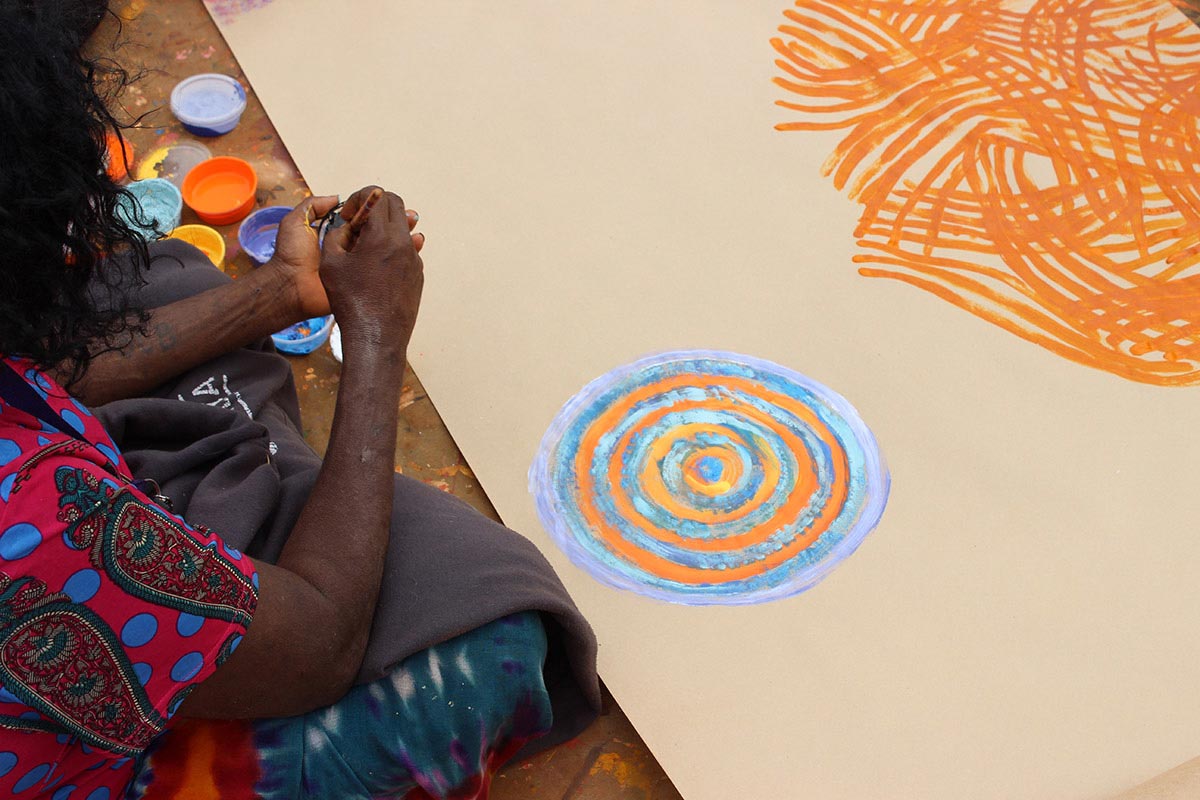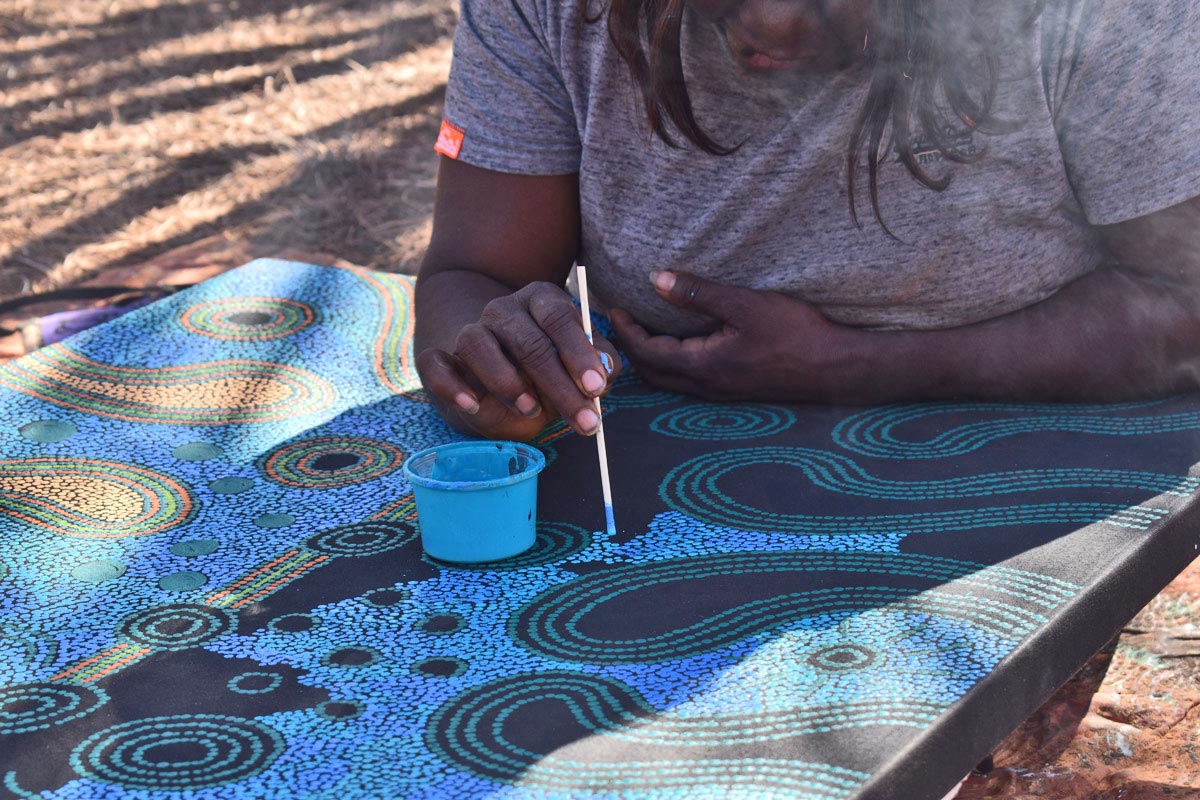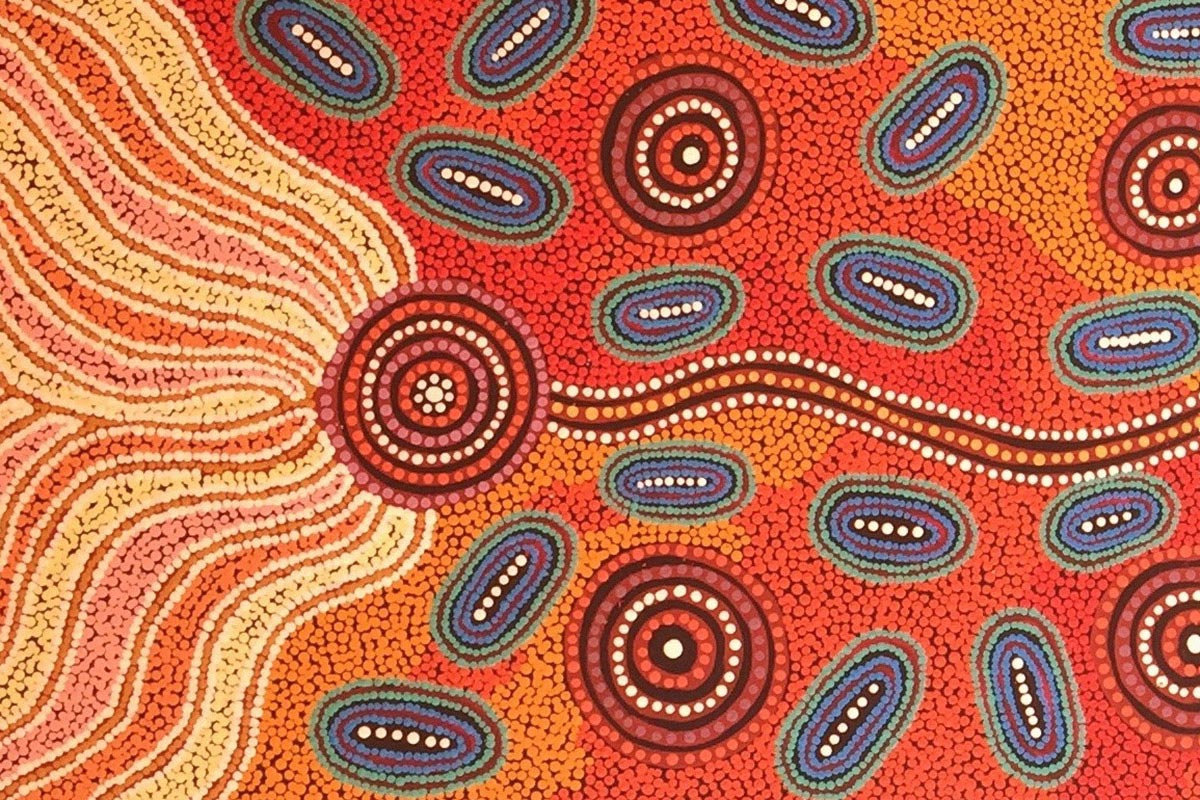Dot Painting
Dot painting is a recognised artistic style used by many Australian Aboriginal artists. Whilst Aṉangu have used dots in ceremonial body designs for millennia, they were not typically used in cave paintings. Contemporary dot painting has become a new way of storytelling through canvas and paint.
Dot paintings originate in 1971, Papunya (Near Alice Springs). Geoffrey Bardon encouraged his students at Papunya too created a wall mural using the children’s Tjukurpa (stories). Bardon then encouraged his students and other members of the community to paint on canvas and other materials. However, issues occurred when Aboriginal Artist became concerned about Westerners, other Aboriginal people from different tribes and an individuals of the opposite gender could see their sacred objects/ motifs they painted.
The Aboriginal Artist did not want Aboriginal people from other lands to see their important Tjukurpa, as it is meant to be kept in their family groups. It is also important that females do not see male stories or males see female stories.
To keep progressing in the arts world, Aboriginal artists decided to hide their sacred objects/ motifs and cover them with intricate dots to conceal their true meaning.
Beryl De Rose working carefully on a new painting Photo Kelly Butler © Walkatjara Art Uluru
Detail of Puli Mankurpa (Uluru, Kata Tjuta & Atila) by Beryl De Rose; 46cm x 183cm Acrylic on Canvas




